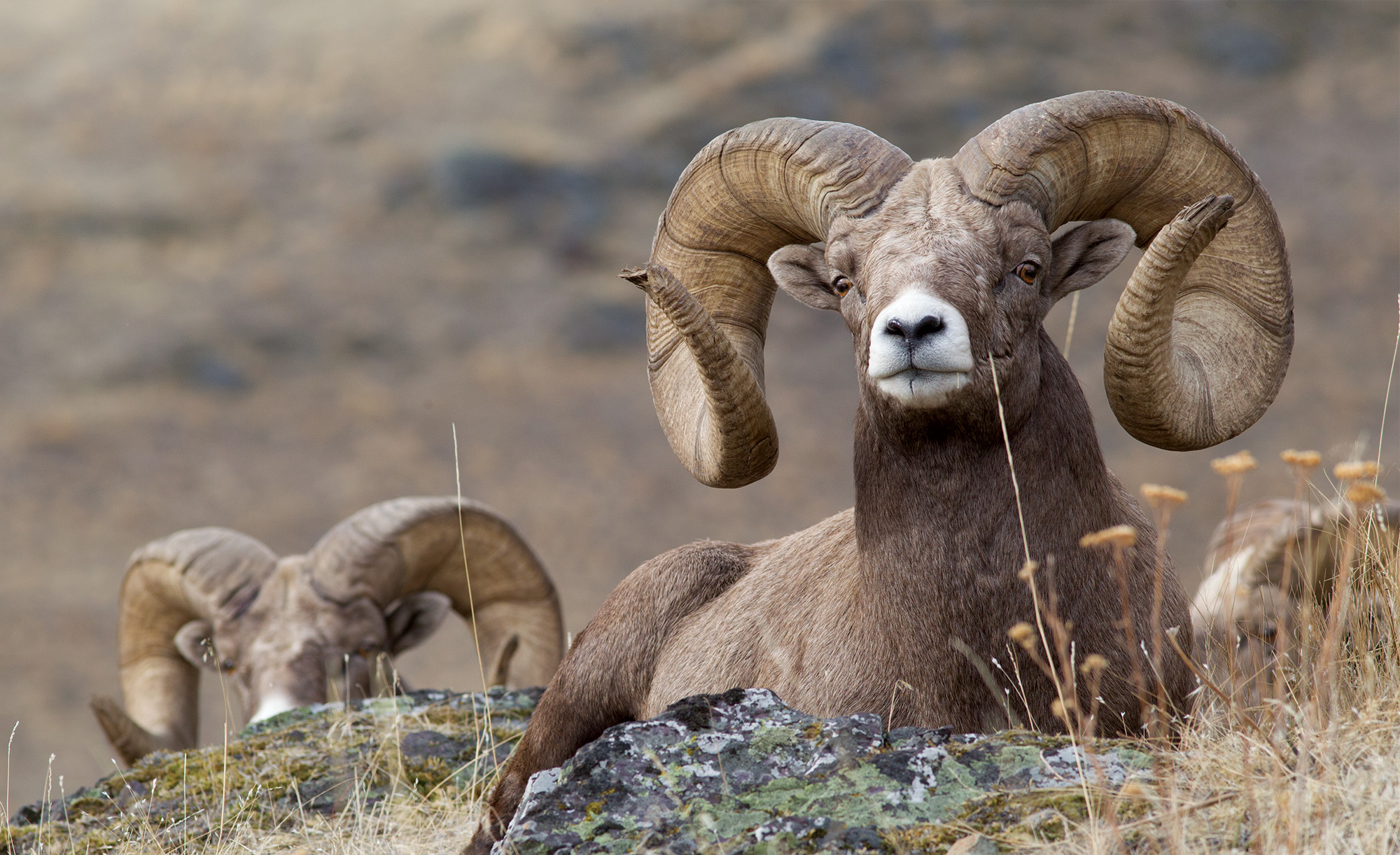
05 Oct Montana’s Bighorn Sheep Back from the Brink
ROUNDING A BEND BESIDE Western Montana’s Rock Creek, I slam on the brakes and pull off the pavement onto what’s left of a crumbling shoulder. My three-year-old laughs from the backseat. On my right, Rock Creek rumbles only yards from his car seat. A near-vertical slope of scree rises to my left, and standing square in front of me is the biggest bighorn ram I’ve ever seen. He’s surrounded by lesser rams and ewes. His horns are the color of coffee, two creams. We stare. One day I would like to hunt a bighorn — not from the road but deeper into their wind-swept haunts. But because there are simply too few sheep and too many hunters, the odds of me drawing a permit to hunt them are akin to winning Powerball.
The mature ram is in no hurry and neither am I, but my three-year-old is. The herd parts just enough to let us pass. It takes a while for the big boy to shrink in the rear view. Encounters like this aren’t that rare, especially up this creek in the spring. But the road to get here, the road to wild, free-ranging, huntable populations of sheep in Montana, has been anything but paved.
Disease, overhunting, habitat loss, and domestic sheep conflicts are just a few of the barriers managers and bighorn sheep are still struggling to overcome today. Even so, Montana’s bighorn sheep population is a conservation success story. The population has gone from fewer than 1,000 animals in the 1940s to an estimated 5,000 sheep now. And the state currently is growing some of the biggest rams in the world, big enough to entice some wealthy hunters to pay nearly half a million dollars just for the chance at taking a big one.
From Widespread to Ruin
At their closest points, Russia and Alaska are barely 60 miles apart. Over the course of several ice ages, during periods when that stretch of sea between Asia and North America was frozen, the Bering land bridge provided easy access for Asian species to migrate into North America. Wild sheep first took advantage of the opportunity roughly 100,000 years ago and promptly began diversifying into various subspecies, including the Rocky Mountain bighorn.
In 1805, Meriwether Lewis recorded that one of his men first saw a bighorn in present-day North Dakota near the junction of the Yellowstone and Missouri rivers. While in Montana, the expedition recorded 27 sightings of bighorns, mostly along those two rivers. Other explorers recorded sightings in the mountains from Yellowstone National Park to Deer Lodge to Glacier National Park. One scientist from the 1920s estimated populations of bighorns in North America and Mexico to be anywhere from 1.5 to 2 million. An estimated 1,500 bighorns were in Glacier in 1916. By 1965, though, the population there had declined to just 180 animals. South of Glacier, in the Sun River drainage (home to one of the state’s largest populations of bighorns), biologists recorded periodic die-offs in 1925, 1927, 1932, and most recently in 1984. Other wild sheep populations across the entire state declined just as drastically. So, what happened? In a word: settlement.
With the opening of Montana’s frontier, pioneers, miners, cattle barons, and the like all moved in with hopes of a better something. Much of the wild game was hunted to feed those early workers and their families. They were squeezed out of habitat, and noxious weeds invaded what little habitat they still had. Settlers moved domestic cattle and sheep onto the open range. And that’s where things went from bad to worse for the remaining wild sheep.
Remember that land bridge? Some sheep, those of 4-H and merino wool fame, never crossed it. These sheep evolved in Europe and Asia, along with the bacteria and viruses that cause pneumonia. While those sheep became immune to those pathogens, the bighorns that migrated didn’t evolve with the same pathogens. As a result, wild bighorns have no immunity. Now, when domestic sheep and bighorns mingle in the wild, the pathogens are passed along and wild bighorns lose big time. “The science is irrefutable that domestic sheep infect wild bighorns with pneumonia,” says Craig Fager, a 25-year veteran biologist with Montana Fish, Wildlife and Parks (FWP).
Making Amends
In 1997, Montana FWP managers reached out to the public and asked them what the future should look like for Montana’s bighorns. After receiving public comments from hunters, hunting groups, and wildlife groups, biologists compiled a 300-page document outlining the past, present, and future of wild bighorn management in Montana. Every bighorn sheep population was accounted for. As regional managers and biologists come and go, that document is the guidebook they use to see that bighorn populations thrive. Managers find trends and learn what works and doesn’t work in a particular region. For example, take Fager’s region in Southwest Montana near Dillon.
Wild sheep there have been on a roller coaster of reintroductions and die-offs since FWP reintroduced 39 sheep in 1985. By 1993, the herd was up to at least 154 animals. But that same winter, an all-age pneumonia die-off reduced the herd to 28 animals, and no lambs survived. More reintroductions followed as did more die-offs. By February 2015, only 19 bighorns were spotted. Fager used hunters this past fall in an attempt to wipe out an entire wild herd in the remote Tendoy Mountains.
Fager hopes that by 2017 those hills will be bare of bighorns. Once that is confirmed, managers will move on to phase two: planting the hills with disease-free wild sheep. FWP will look for 50 seed-sheep from around Montana to plant in the area. It seems logical enough: take out sick sheep and replace with healthy sheep. But there is a catch. There are still some private domestic sheep allotments nearby within range of roaming bighorns, which means wild sheep could once again become sick. “Private land flocks are an inherent risk of being in the bighorn business,” says Fager. “There is some risk around the Tendoys, but it’s as good as it’s going to get in terms of domestic flocks in the area.”
The Bozeman-based Wild Sheep Foundation has a seat at the management table nationally, as well as in Montana, Washington, Idaho, and Utah — wherever wild sheep roam. They support killing sheep to save sheep as long as there are long-term plans to transplant new sheep, the right sheep. “You want to transplant ‘round sheep’ into ‘round habitat,’ not ‘square sheep’ into ‘round habitat,’” says Kevin Hurley, the foundation’s conservation director. “By that, we mean there needs to be careful evaluation and analysis of source stock to target habitat.”
As for the rest of Montana, the story of the Tendoy herd isn’t an anomaly. By the end of 2010, pneumonia in five western Montana herds had killed 640 wild sheep — more than 10 percent of the state’s entire bighorn population. With so many cases of recent die-offs, Montana is fortunate to have healthy seed populations of sheep in places like Wild Horse Island. Trapping and relocating animals to other locations in Montana and beyond is nothing new for wildlife managers. In fact, species like elk were hunted to near extinction in the early 1900s with only a handful left in Yellowstone National Park. With protection from the government and proper habitat, the herd grew so well that thousands of elk were relocated throughout Montana and the entire nation.
As for bighorns, biologists in Montana have worked to trap and relocate sheep to suitable habitat since the early 1940s. The early years, though, came with a steep learning curve. Most captured sheep simply dispersed from the release site and died. A couple of decades spent refining the capture and relocation techniques has boosted sheep survival after restoration.
Today, sheep capture and relocation is a sight to behold, with net-gunners leaning out of a helicopter that maneuvers to track manic sheep. Once caught, sheep are secured, tethered together, and stacked five high underneath the helicopter for transport. Many sheep are fitted with radio collars so biologists can track their movement. None of this comes cheap — not the disease studies and research, the tracking collars, the biologists, nor the helicopters at $1,500 per hour. And all of that money comes from sportsmen and women in the form of license dollars and taxes on shooting equipment, the latter thanks to federal legislation in 1937 that established the Pittman-Robertson Act.
In addition, Montana’s bighorn research and restoration gets a big shot of money every year thanks to what’s called the Governor’s sheep tag. Hunters like myself wait decades to draw a sheep tag, but there’s a way to get to the head of the line. Every year since 1986, one hunter forks over big money at a Wild Sheep Foundation auction for a permit that will allow him or her to hunt in any area in the state. In 2013, a hunter paid $480,000 for this chance at a big ram. By comparison, a guided sheep hunt in Alberta runs $35,000. All told, the Governor’s sheep tag has raised roughly $6 million — money earmarked specifically for bighorn sheep restoration, management, and research in Montana.
Hunters across the country are keyed in on Montana’s sheep populations because, quite simply, it not only has the biggest rams in the Lower 48 but arguably the world. Consider this: 10 out of the top 20 Boone and Crockett rams were killed in Montana. The other 10 were from Alberta and British Columbia. And those big rams aren’t necessarily cresting the ridges of Western Montana. Behemoth bighorn rams roam the crumbling clay breaks country of the Missouri River in Eastern Montana — the same country in which members of the Lewis and Clark expedition first saw them. These sheep, too, are transplants. A poacher killed the last wild sheep in the breaks in 1916. Since 1947, managers have been supplementing the breaks country with wild bighorns first from Colorado, and most recently from the Sun River and the National Bison Range in Western Montana.
As for those sheep my son and I spotted up Rock Creek, they’ve seen their share of despair and disease. In 2012, a truck driver plowed through a herd, killing seven lambs, a full third of the lamb population from that year. This was right on the heels of a pneumonia outbreak in which FWP wardens had to cull 19 sheep. That left maybe 60 animals. Now there might be around 100. For a few years, managers halted hunting there to help the herd recover. Now, four tags are issued each year — two for rams and two for adult ewes. Last year, more than 700 hunters put in for the draw, meaning your chances of successfully drawing a ram tag were less than 1 percent. Odds of drawing a ewe tag were around 9 percent. Odds are equally dismal in the eastern half of the state. In a place like the Missouri River Breaks, one unit saw more than 3,000 hunters put in for 10 tags. I don’t bother to apply to hunt in Rock Creek even though it’s 30 minutes from my door. Perhaps one day my son will bring his kids up Rock Creek to hunt a big ram. For now, I’m happy just knowing they’re still around.
- Using a variety of techniques (including helicopter transport), biologists from Montana Fish, Wildlife and Parks often work with specialist contractors to trap wild sheep within healthy populations and relocate them to areas where the species had previously been extirpated.
- Bighorn sheep are gregarious animals, readily interacting with each other as well as domestic sheep, increasing the threat of disease exposure.
- Using a variety of techniques (including helicopter transport), biologists from Montana Fish, Wildlife and Parks often work with specialist contractors to trap wild sheep within healthy populations and relocate them to areas where the species had previously been extirpated. Photo courtesy of Montana FWP
- Bighorn rams can be aged according to the conspicuous rings within their horns. Each ring represents a new year of growth.
- Using a variety of techniques (including helicopter transport), biologists from Montana Fish, Wildlife and Parks often work with specialist contractors to trap wild sheep within healthy populations and relocate them to areas where the species had previously been extirpated. Photo courtesy of Montana FWP
- Using a variety of techniques (including helicopter transport), biologists from Montana Fish, Wildlife and Parks often work with specialist contractors to trap wild sheep within healthy populations and relocate them to areas where the species had previously been extirpated. Photo courtesy of Montana FWP




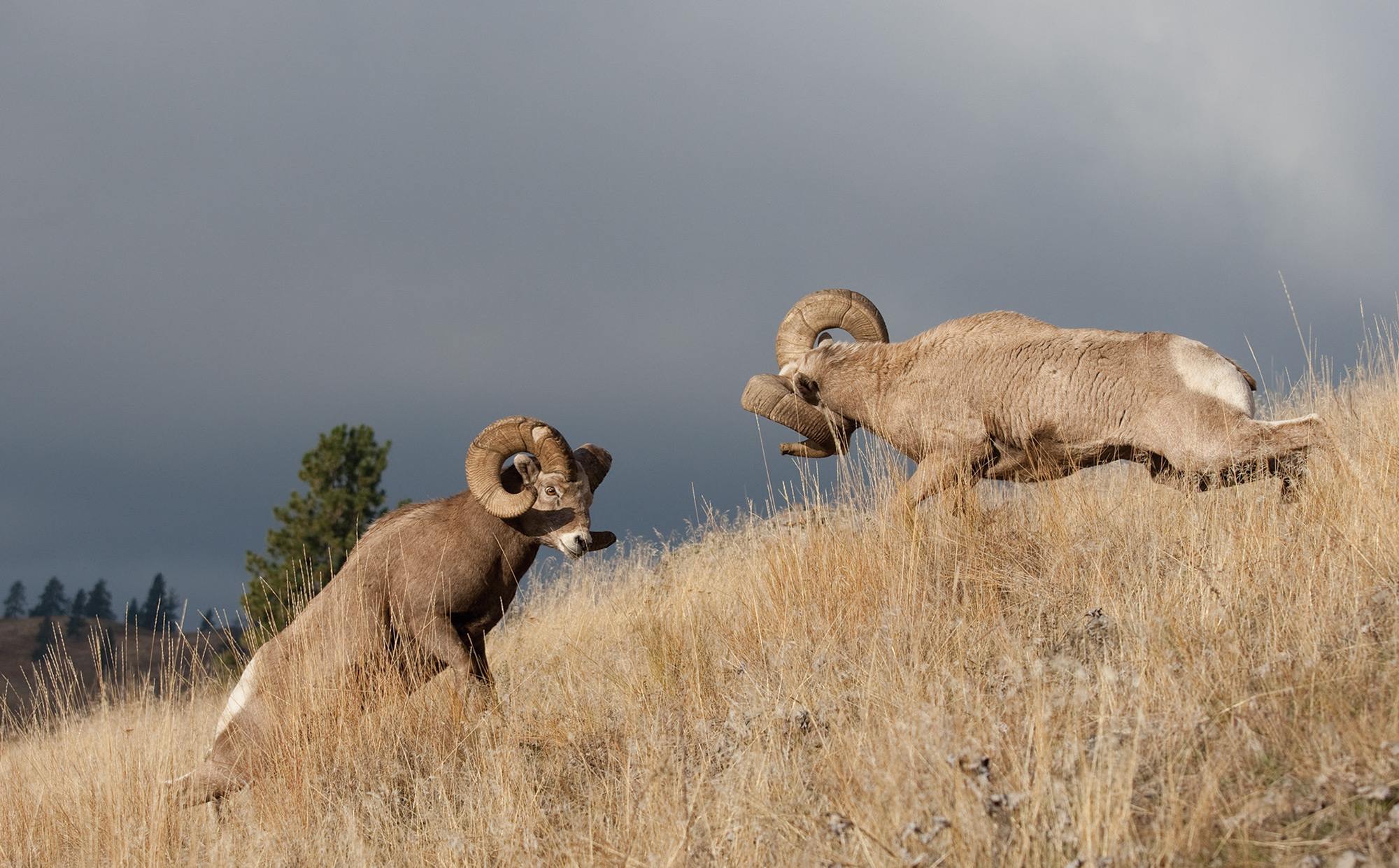
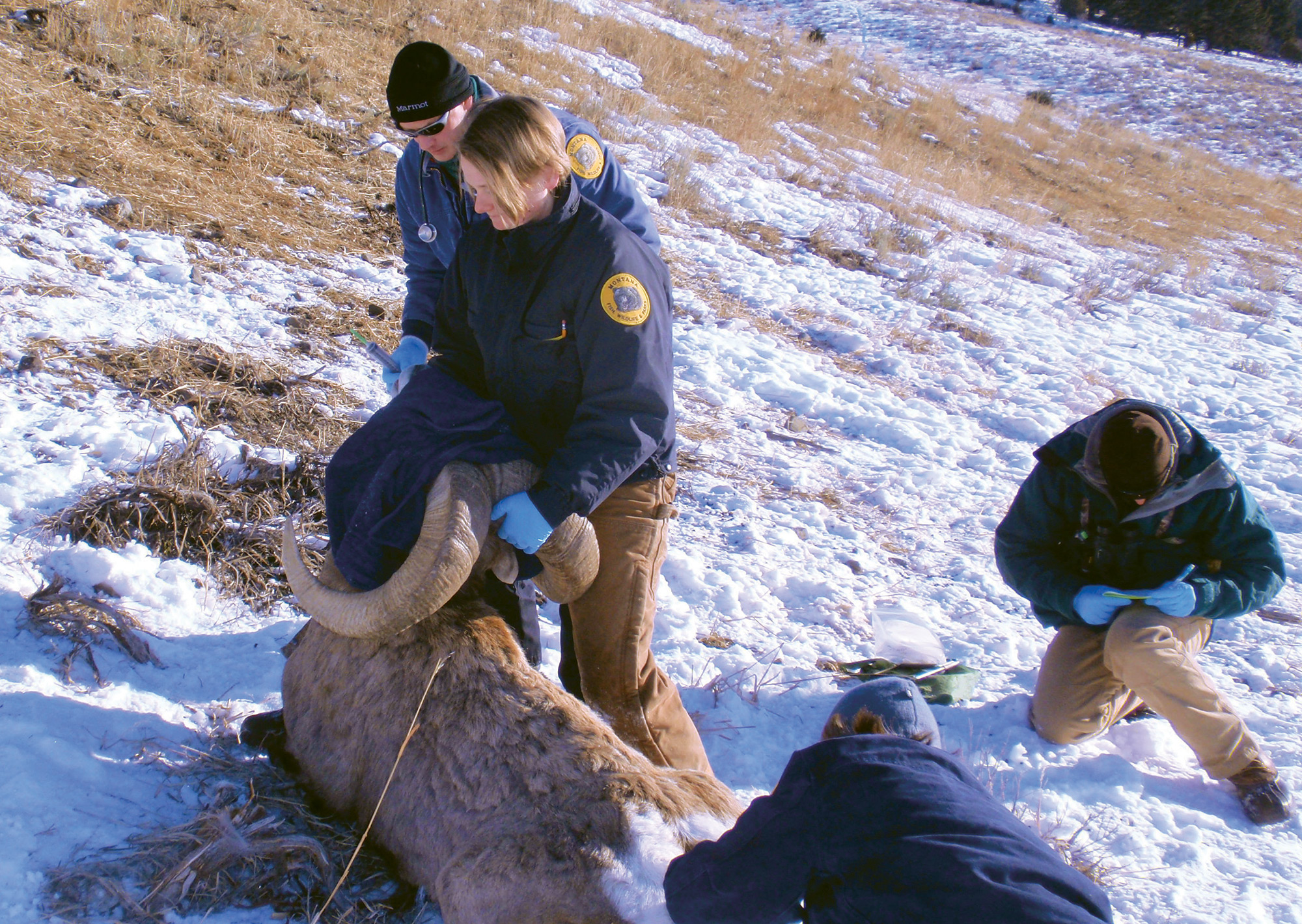
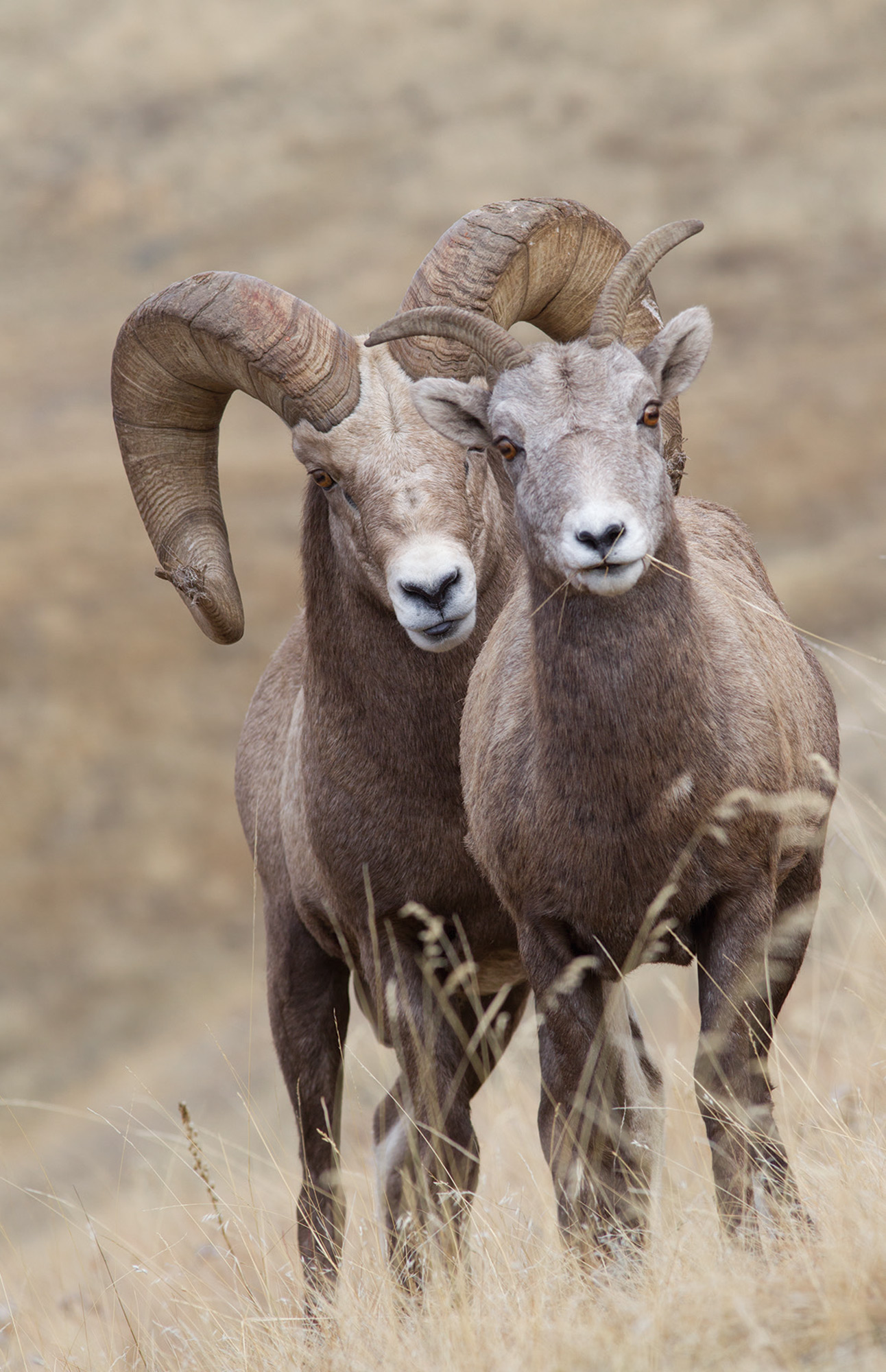
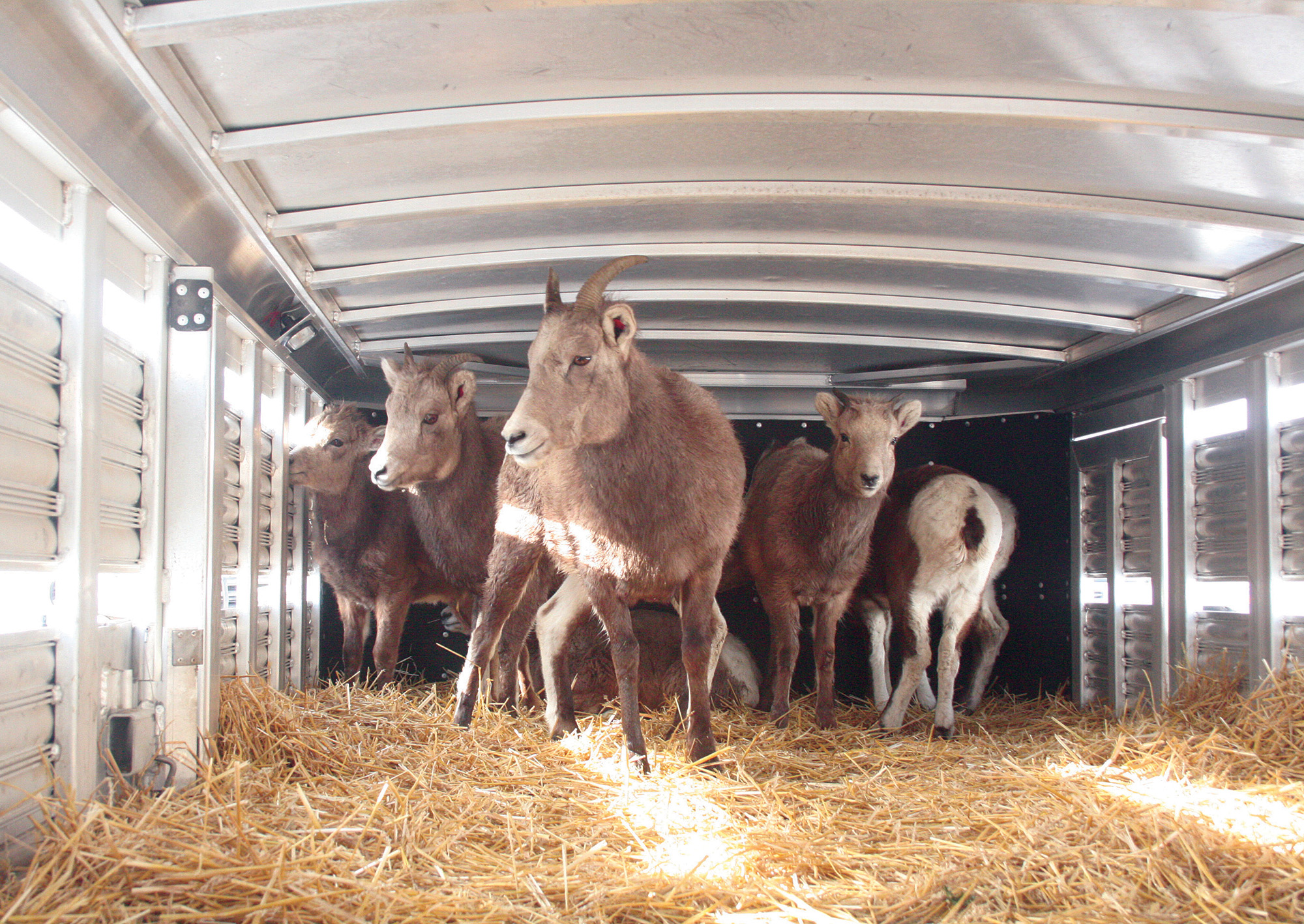
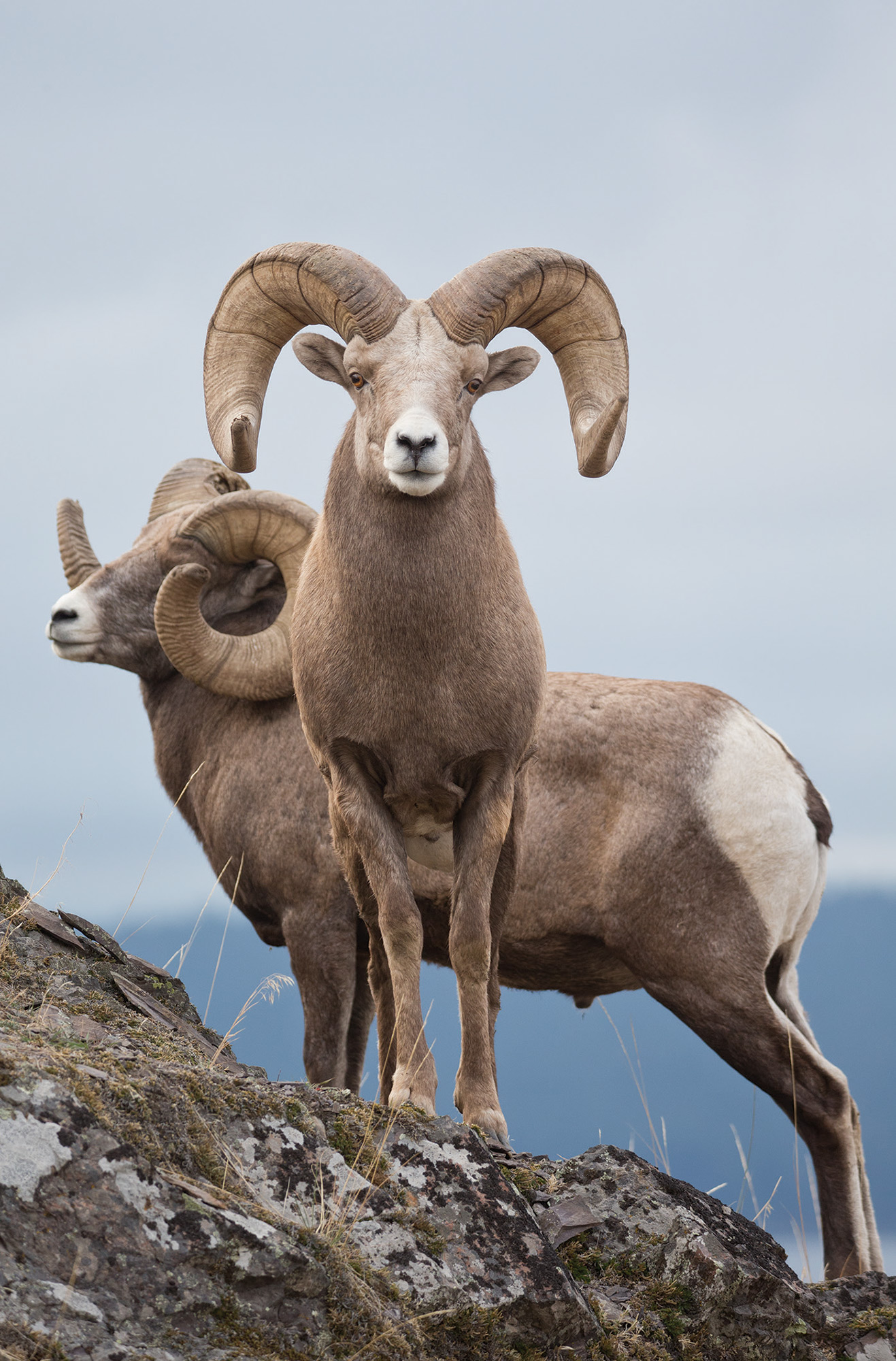
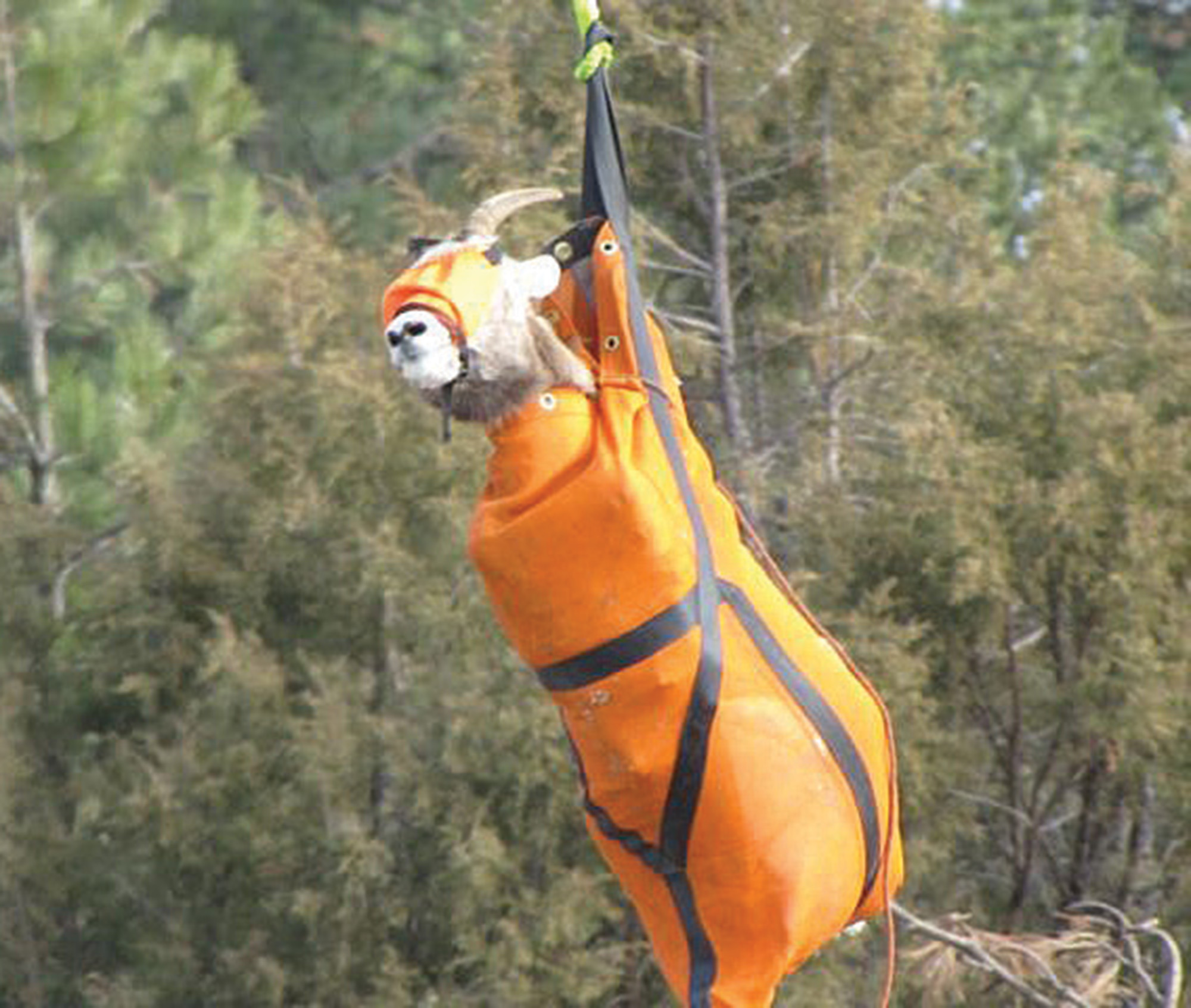
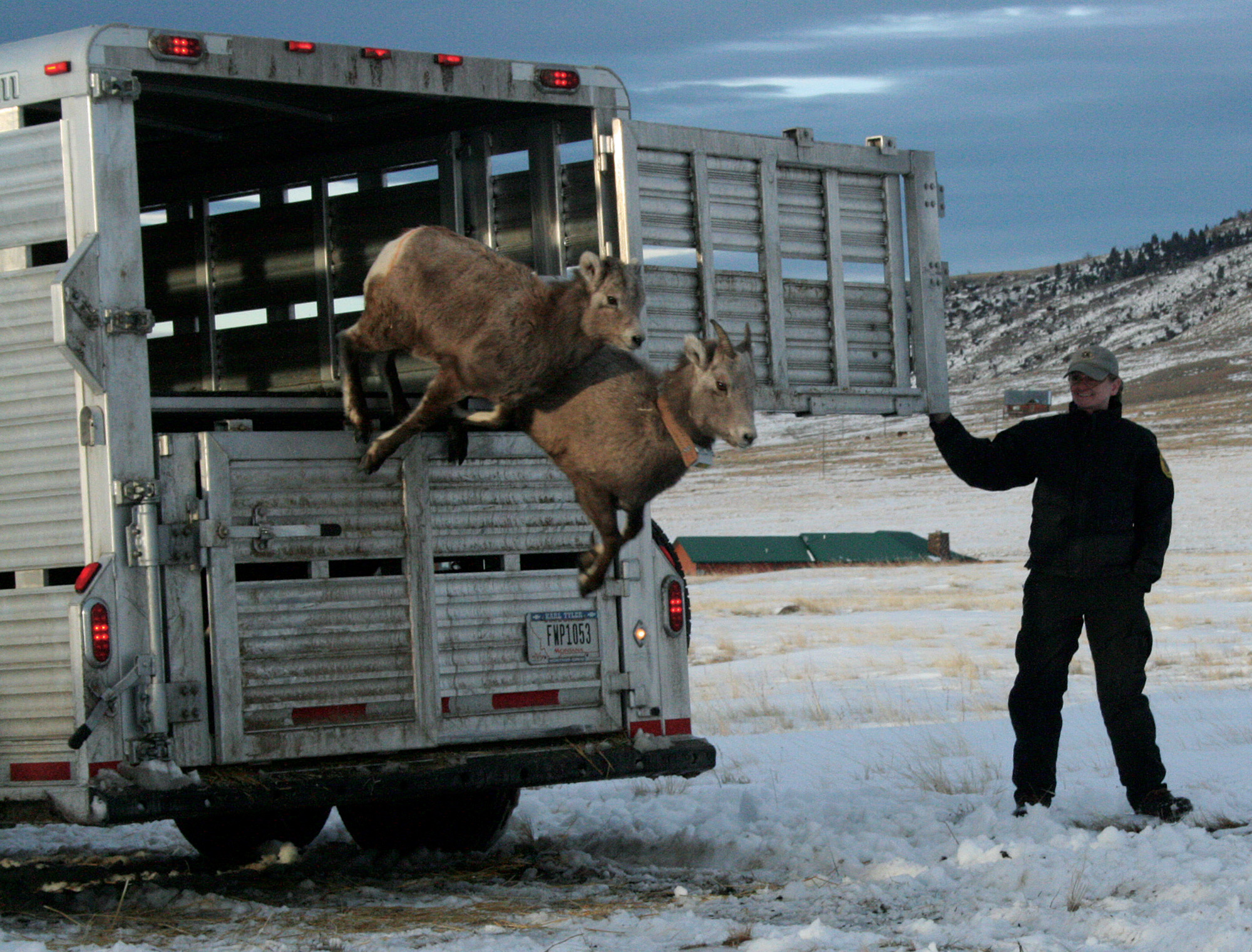
No Comments